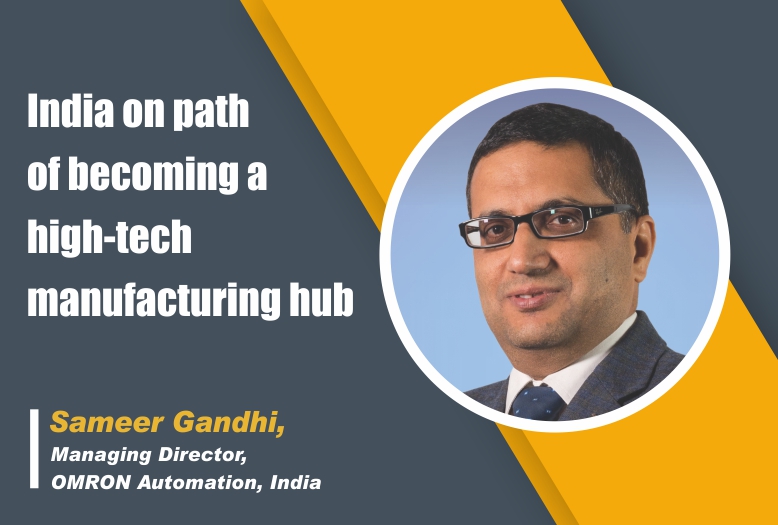India on path of becoming a high-tech manufacturing hub
By OEM Update Editorial January 3, 2022 4:38 pm IST
PLI scheme to enhance technology and export capabilities leading to more business opportunities for industrial automation players.
Manufacturing sector on V-shaped recovery
The manufacturing sector, post pandemic, is on a path of a V-shaped recovery (following the GDP growth) led by sectors like FMCG, automobiles (including EVs), pharmaceuticals, iron & steel, and cement.
India’s GDP increased by 4 percent in FY20; however, it contracted by 7.3 percent in FY21. With a revival in consumption and investment in the third quarter of 2021, India’s GDP growth rate for FY22 is projected to be 11 percent (Economic Survey 2020-21).
Also, as per the survey conducted by FICCI, capacity utilisation in India’s manufacturing sector will hover around 72 percent in the second quarter of FY22, indicating significant recovery in the sector. Hence, one can infer that it will continue to be a high growth sector for the country and will continue to attract investment. According to DPIIT, cumulative FDI inflows in the manufacturing subsectors amounted to US$ 100.35 billion between April 2000 and June 2021.
With initiatives like Make in India drive and National manufacturing Council, India is on a path of becoming the hub for hi-tech manufacturing too as evident by the investment done in setting up manufacturing plants by global giants in the country. Revived domestic demand, ever growing middle class, billions of consumers with rising purchasing power will continue to make it an attractive destination rendering it a bright growth outlook in the coming years.
Impact of production linked incentive schemesThe impact of Production Linked Incentive schemes also needs a mention here. Introduced by the government first in March 2020 and later in November 2020, the schemes cover 13 important sectors ranging from automotive components, white goods, aviation to renewable energy and is expected to show very positive results in making domestic manufacturing more competitive via creation of national manufacturing champions with localized production bases and supply chains. This is going to translate into a significant rise in needs of enhancing technology and export capabilities leading to more business opportunities for industrial automation players like OMRON serving hi-tech goods manufacturers. Minimum production in India as a result of this scheme, it is expected to be over US$ 500 billion in 5 years.
EV vehicle production & infrastructure development Another notable aspect is the rising consideration towards developing smart cities, EV vehicle production & infrastructure and industrial corridors. With all this, one can expect a strong movement & development in the infrastructure segment in the near future which will surely assist in giving a strong impetus to industrial development leading to more technological advancement in the sector manufacturing.
Managing supply challenge of semiconductor & resin shortage
Having said all this, I would also like to highlight the delivery challenge created by the worldwide post pandemic semiconductor & resin shortage. Though manufacturers are trying to take care of it by adopting measures like increasing the production capacity, redesigning products so as to move away from hard-to-find components, renegotiating with suppliers to increase allocated production volume, it might take some more time for us to see the major improvements.
This is an unprecedented situation on a global level and so it might impact the growth of the sector in India too in 2022. The positive indicator is high order booking but the downfall is that it is impacting makers’ ability to deliver to customers.
Cookie Consent
We use cookies to personalize your experience. By continuing to visit this website you agree to our Terms & Conditions, Privacy Policy and Cookie Policy.


















